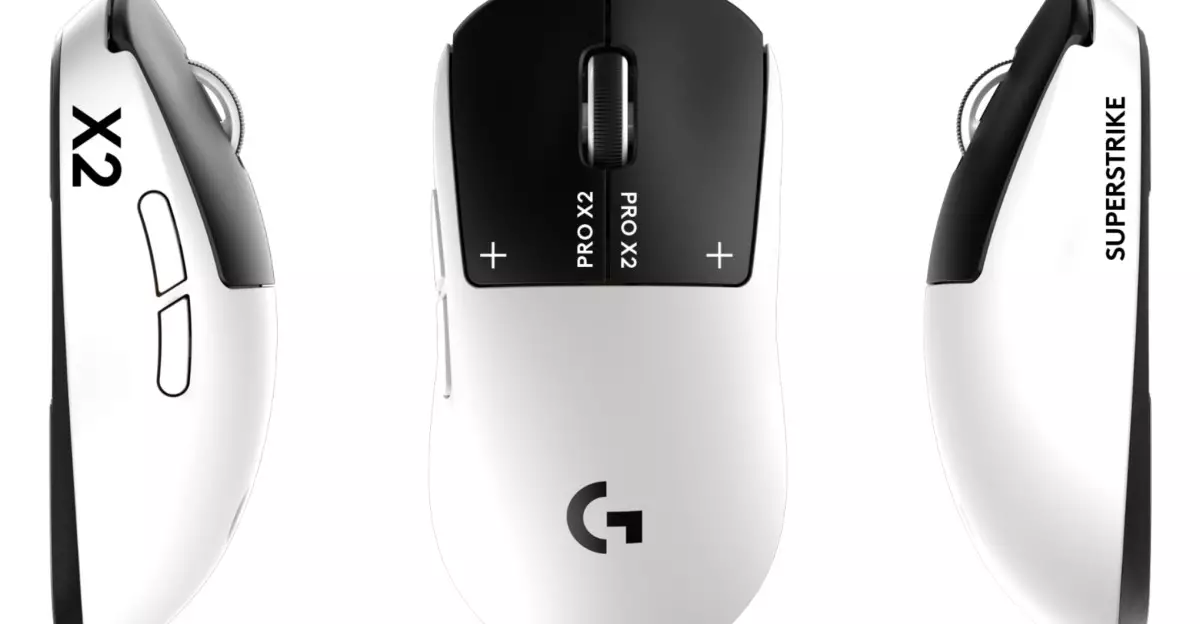In an industry obsessed with incremental upgrades, Logitech’s introduction of the Superstrike marks a bold leap into uncharted territory. Unlike traditional gaming mice that rely on mechanical switches, the Superstrike adopts an innovative approach by integrating an analog sensor system that leverages haptic technology to imitate the feel of a physical click. This paradigm shift raises critical questions about the future design principles of gaming peripherals, balancing innovation with user expectation.
The core concept behind the Superstrike’s design is to eliminate the limitations imposed by physical switches—such as finite actuation points and wear-and-tear over time—and to replace them with a more adaptable, customizable feedback system. Logitech’s proprietary Haptic Inductive Trigger System (HITS) employs tiny actuators to produce tactile sensations that emulate the click sensation in real time. Players are no longer bound by the mechanical response of switches; instead, they can tailor how and when the mouse registers clicks. This tech is designed to ensure that gamers experience a seamless, latency-optimized interaction that could redefine responsiveness in competitive gaming.
However, integrating haptic feedback within a mouse raises legitimate skepticism. Will the simulated feedback genuinely match the reliability and certainty of physical clicks? Can haptic actuators sustain long-term performance without degrading, and will users adapt to this new tactile experience? While Logitech promises lower latency—claiming improvements of up to 30 milliseconds—the real test will be whether players perceive these enhancements as meaningful or merely gimmicks.
Performance and Personalization: A New Era for Competitive Gaming
The Superstrike pushes the boundaries of responsiveness with its support for rapid trigger techniques, an innovation borrowed from high-end gaming keyboards. With five customizable reset points, players can program the sensor to reset at different trigger depths, allowing for rapid, nuanced inputs that were previously only possible on mechanical switches with physical limitations. This granular control promises to give competitive gamers an edge, enabling faster reaction times and more precise input sequences.
Yet, what is truly remarkable is Logitech’s integration of ultra-high polling rates—up to 8,000Hz—via a dedicated Lightspeed wireless connection. While critics might dismiss such figures as overkill, the underlying goal is clear: minimize even the slightest delay between intended action and execution. Even the most skilled players might question whether their reaction times could benefit from such ultra-responsive hardware, but for the most dedicated eSports athletes, this could be a game-changer.
The lightweight design—just 65 grams—further emphasizes the focus on speed and agility. For players who favor smaller, faster mice, Logitech’s Superstrike aims to strike the perfect balance between weight, grip, and responsiveness. The inclusion of the Hero 2 sensor ensures sharp accuracy, supporting high polling rates, and supporting a high degree of precision essential for competitive play.
Furthermore, the introduction of the Superlight 2C, a smaller, lighter sibling, indicates Logitech’s recognition of the diverse preferences among gamers. Not everyone’s hands are suited for large, bulky mice, and a lighter, more compact option broadens the appeal, especially for those accustomed to fingertip or claw grip styles. It suggests that Logitech is not merely trying to innovate, but also to cater to niche preferences within the competitive community.
A Vision That Sparks Debate and Excitement
Despite the impressive specifications and innovative intent, it’s crucial to approach the Superstrike with a healthy dose of skepticism. Haptic feedback, while promising, must demonstrate consistency and durability over long periods of intense use. The concept of replacing mechanical switches with simulated tactile responses challenges longstanding assumptions about reliability and feel.
Moreover, the practical benefits of ultra-high polling rates and rapid trigger formats remain contentious. Will the average gamer notice these differences, or will they be drowned out by the subtleties of human reaction time? Still, Logitech’s willingness to push such boundaries signifies a belief that gaming gear should evolve from merely “good enough” to genuinely transformative.
The Superstrike is not just a product—it’s a statement. It underscores a growing trend among elite manufacturers to innovate by redefining fundamental inputs, blending technology and human perception to craft a new standard. Whether or not it will deliver on all its promises remains to be seen, but one thing is clear: Logitech is envisioning a future where sensations and responsiveness are fully customizable, blurring the boundary between hardware and human skill.

